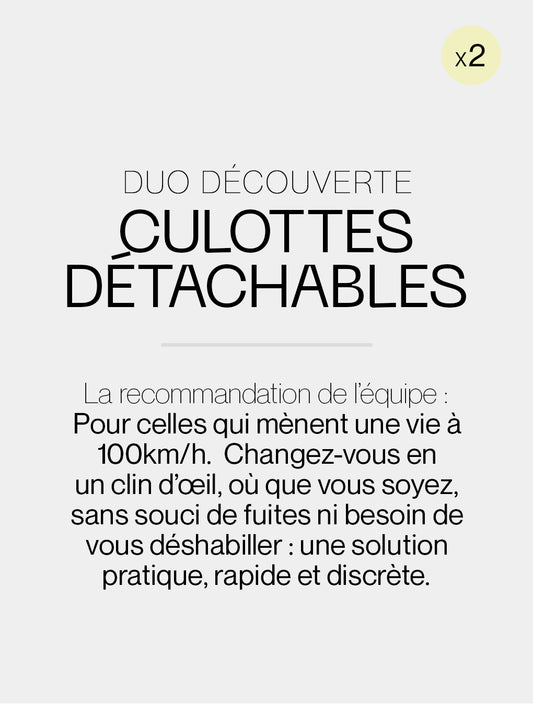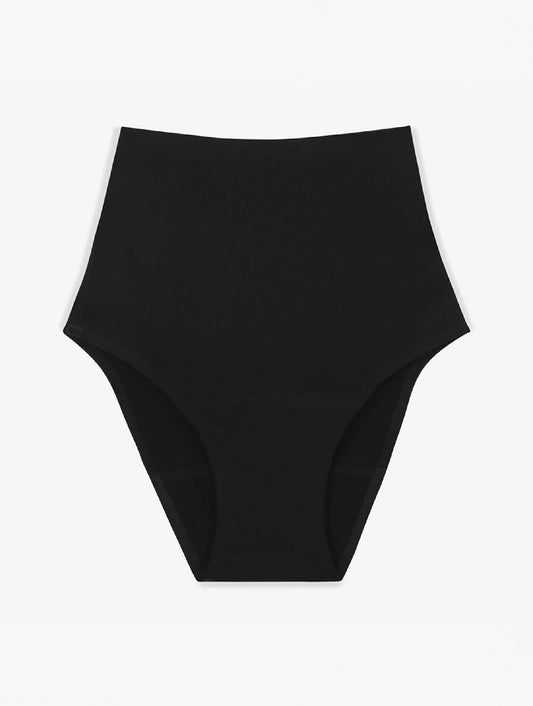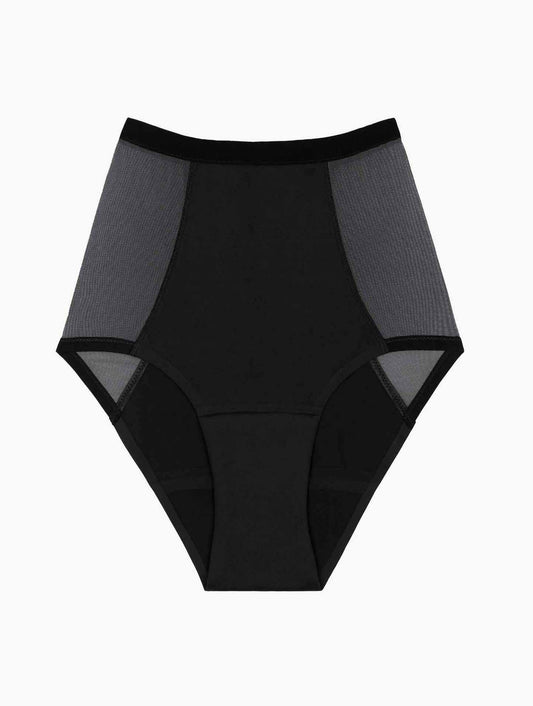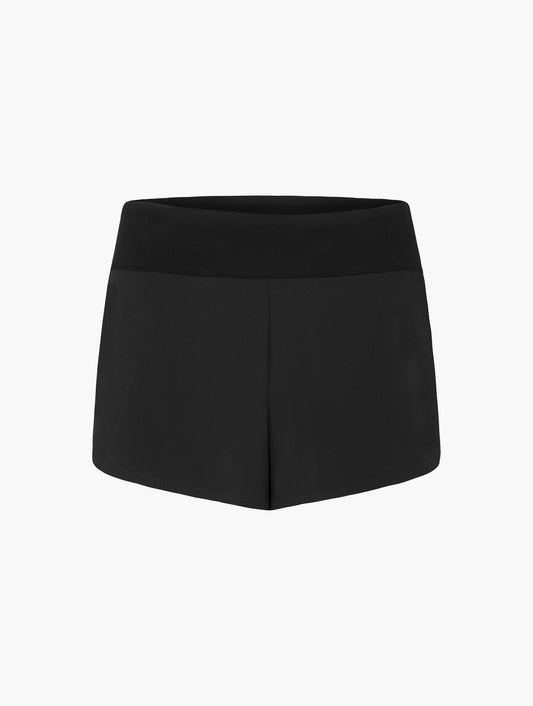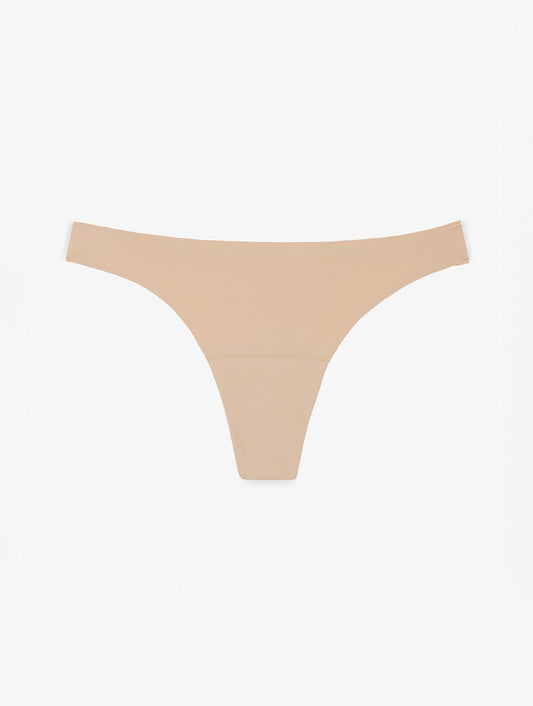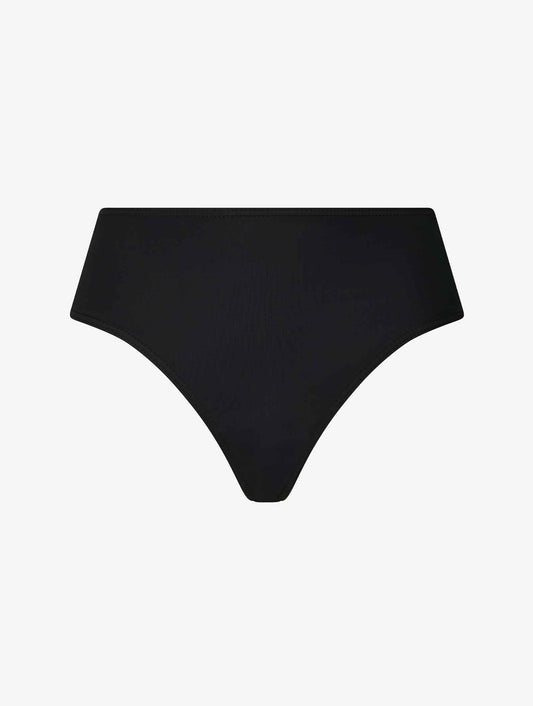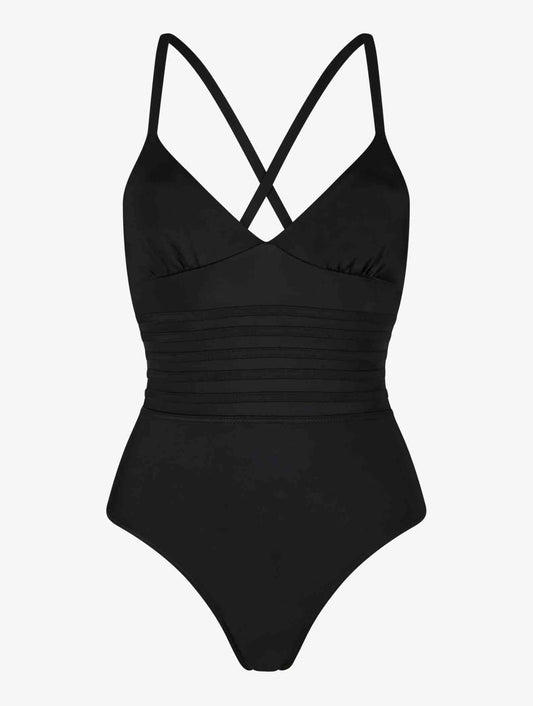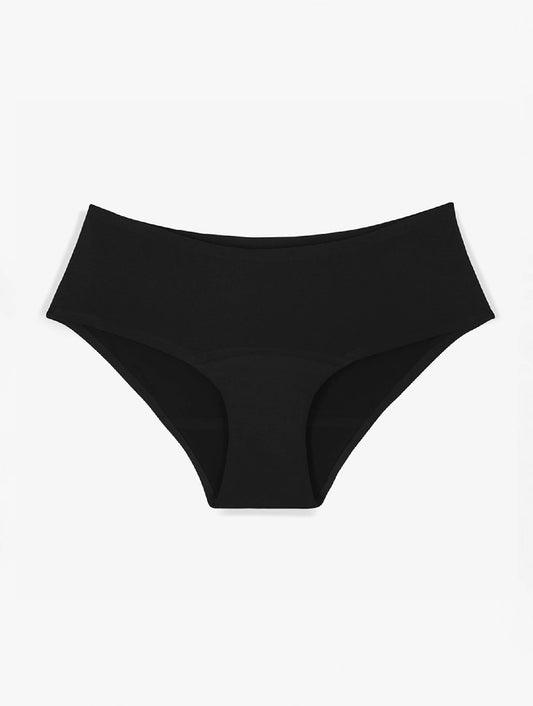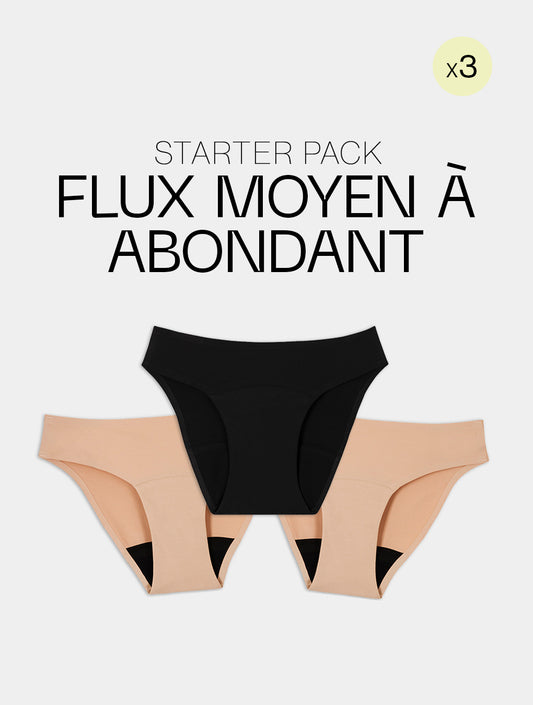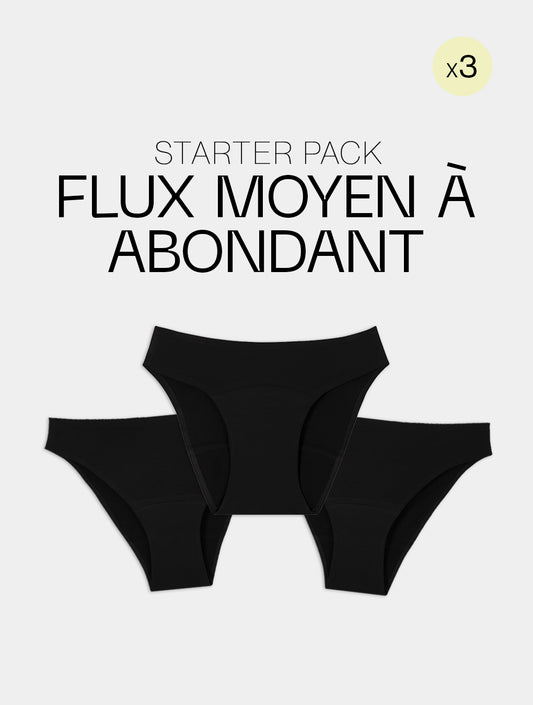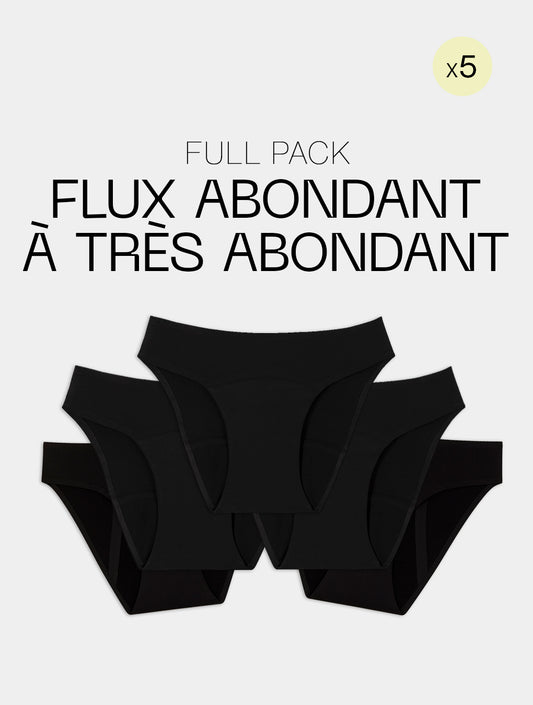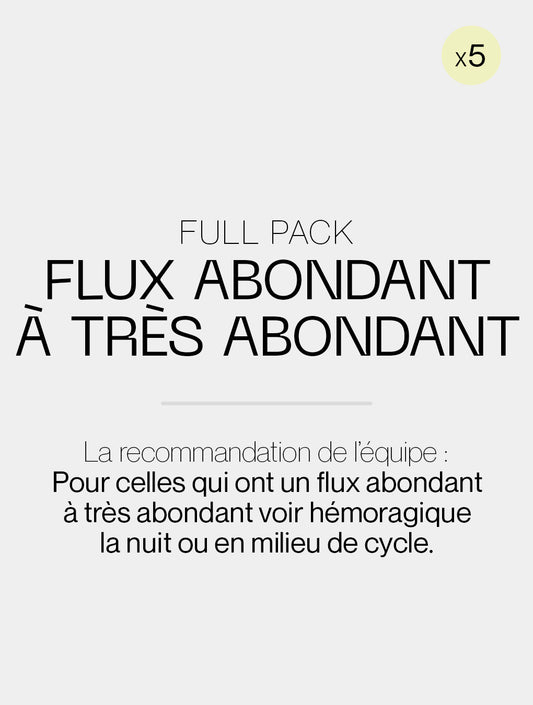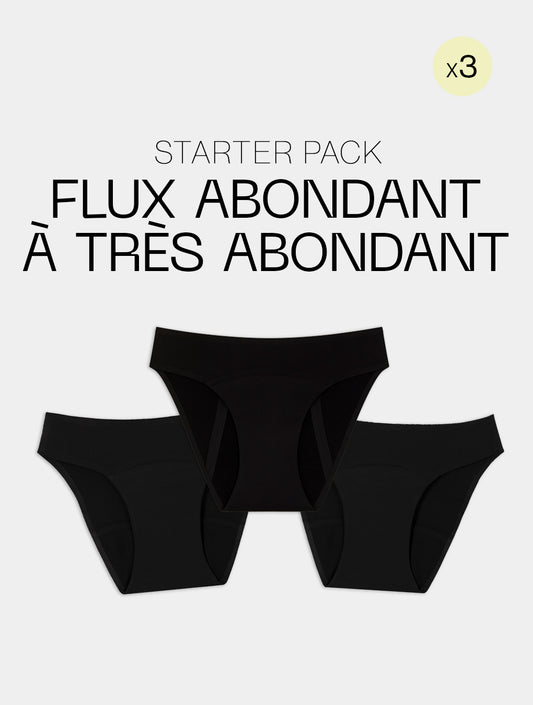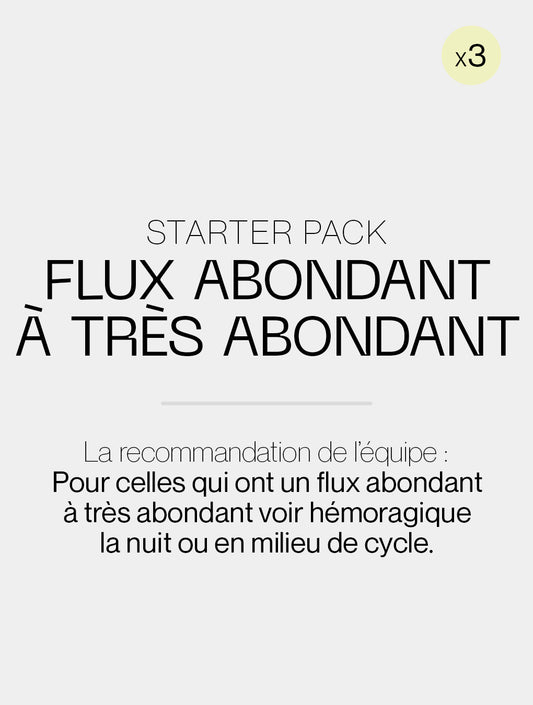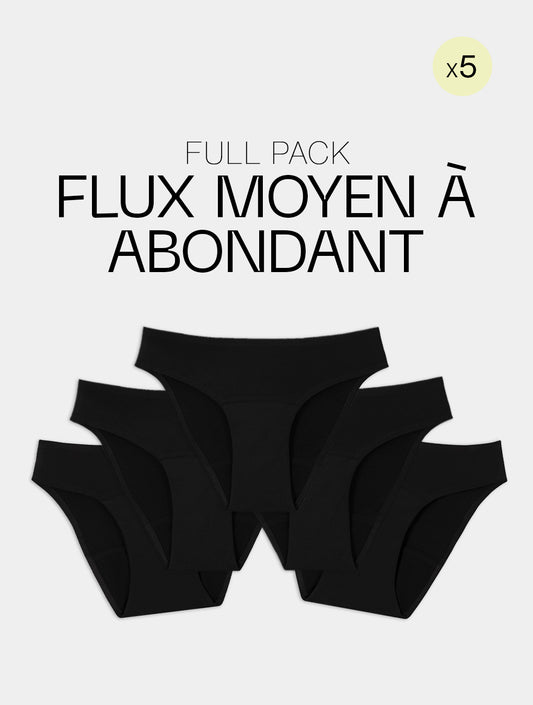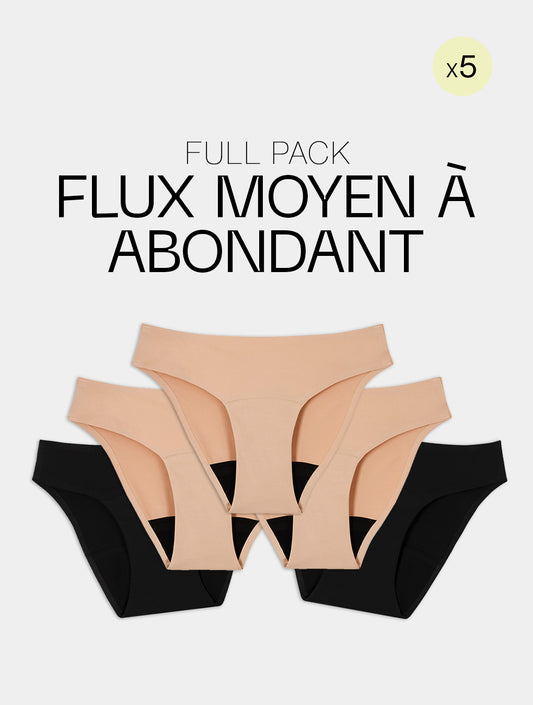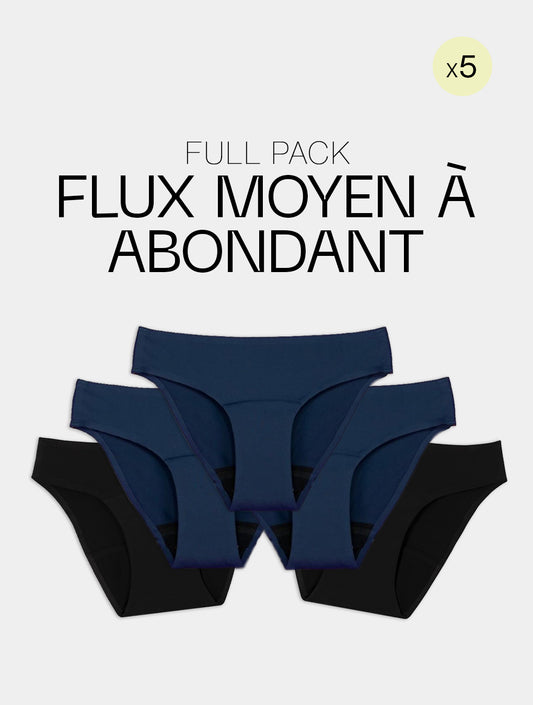What hygienic protection is made for me?
For a long time, the choice of sanitary protection was limited to pads and tampons. Today, a new generation of organic and eco-friendly pads is appearing: washable or reusable pads, internal or external devices, in materials that respect the planet, etc. Washable panty liners or pads, disposable or reusable organic tampons, silicone menstrual cup medical, menstrual panties certified OEKO-TEX® STANDARD 100: which hygienic protection is made for me? We answer your questions.





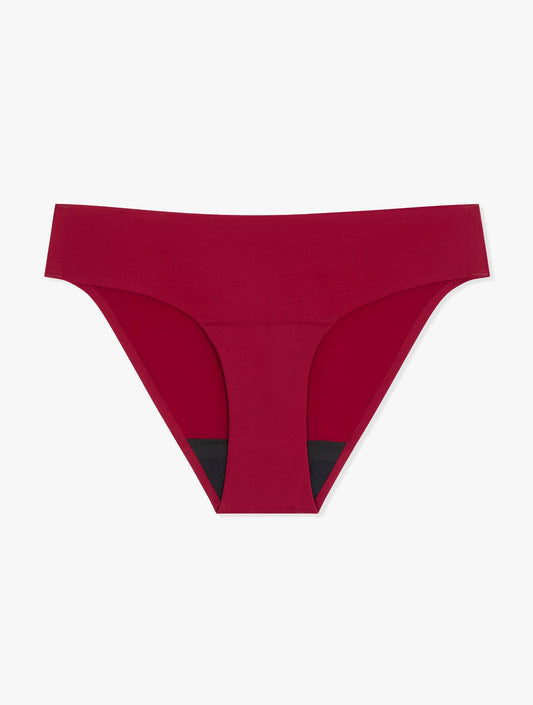



How to choose your reusable sanitary napkins?
As with disposable pads, the choice of washable sanitary pads is based mainly on the materials used in their manufacture and on the intensity of the flow of the rules. For light or moderate bleeding, washable protections size S or M will be perfectly suitable. For heavy flows, we recommend size L washable pads. For all other days (excluding periods), the use of organic cotton panty liners is also possible. They protect the panties against white discharge and spotting (minor minor bleeding), but also against light urinary leakage.
Depending on your preferences in terms of patterns, you can focus on washable towels with a floral, graphic, geometric or downright plain print. For comfortable management throughout the cycle, it is better to provide your washable protections in large quantities and in different sizes. Some brands offer their products in batches (from 2 to 10 models) of identical size or of varying sizes to follow the intensity of the flow.
How to use reusable organic tampons?
The use of reusable organic tampons is identical to that of disposable hygienic tampons. However, most models do not include an applicator, it is better to be comfortable with your privacy and with the blood. Indeed, to introduce and remove your organic cotton tampon, you will have to use your fingers. For those who are put off by the sight of blood, reusable organic tampons are not the right solution. Unless you invest in a washable tampon kit with a reusable applicator. As with washable pads, reusable organic tampons are available in different sizes depending on the intensity of the bleeding: light or mini flow, medium or medium flow and heavy or maxi flow. Whatever your choice, be aware that to avoid any risk of vaginosis or worse of toxic shock syndrome ( TSS ), the internal hygienic protections must be changed every four hours on average.
Note: wearing a tampon can cause the vaginal mucous membranes to dry out slightly during menstruation. The use of a lubricating gel is therefore recommended to avoid any form of pain during sexual intercourse.
Does the menstrual cup really protect against possible leaks?
The menstrual cup does not absorb bleeding, but collects it. Its use requires a little work, but nothing insurmountable. The first step is to sterilize the cup. Once it is clean, you must become familiar with its mode of introduction. Indeed, the menstrual cup is not placed as it is in the vagina. It must first be folded to facilitate its insertion. Then, you have to master the withdrawal step. In fact, every four hours or so, both the cup and the tampons must be changed. Here, it is actually a question of emptying the blood and cleaning the cup before placing it back in the vagina. At this stage, what users fear is the famous suction cup effect (which is also extremely effective against possible leaks) which can cause overflows. With a little practice, the gesture lurks and becomes anecdotal. Ideal accessory for the practice of sport including the swimming pool, the cup can sometimes adapt badly to life outside. At work, in class or on a trip, it requires finding a water point for emptying and cleaning. It cannot be worn during sleep for the same reasons as the other internal protections (it should not be worn for more than four hours to guard against the risk of SCT). After childbirth, its use is not possible. It is necessary to wait for the return of diapers .
Are menstrual panties suitable for heavy flows?
Pretty, discreet, even downright invisible under clothing, period panties hide their game well. Because, in truth, they are capable of absorbing large quantities of blood. The most absorbent SMOON menstrual panty can even hold the equivalent of four medium or two full tampons. Suitable for heavy periods, it allows you to stay protected for up to 12 hours day and night. Its OEKO-TEX® STANDARD 100 certified design guarantees a zero odor result, zero feeling of humidity and zero leakage. Along with their effectiveness, what we appreciate about menstrual panties in general is also their elegance and modernity. Sober in color, they adopt resolutely trendy shapes. High briefs, classic briefs, shorty, thong/tanga: the choice is vast to stay stylish and comfortable during your period.
Menstrual precariousness: soon free organic period protection for students?
To combat the scourge of menstrual precariousness which affects 10% of women in France, President Macron has proposed a strong response. Like the solution already implemented in Scotland (free periodic protection for everyone in public places), the French government has taken the decision to soon equip all university residences and all university health services with distributors. free sanitary protection. The Minister of Higher Education specified that these free hygienic protections would be selected on an organic and ecological criterion (towels, tampons, cup or period panties respectful of the planet and health). The objective? 1,500 distributors and full free periodic protection at the start of the 2021 academic year.
FYI: women spend in their lifetime from 2,000 to 4,000 euros on average for their disposable periodic protections. By opting for zero waste protection such as reusable pads, washable tampons or period panties, the cost of periods is generally halved. For menstrual panties alone, the expenditure is estimated at 30 euros per year on average. A cost that could be reduced, especially since a certain number of mutual insurance companies (such as SMENO and LMDE) now offer partial or total reimbursement of hygienic protection.
By Valerie



